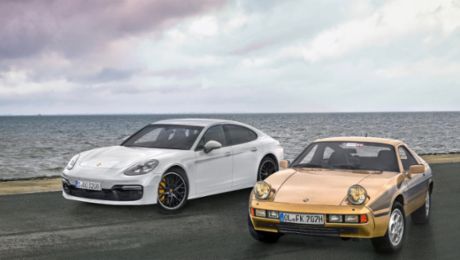The brain researchers at the Free University of Berlin call their project “Brain Driver” and are demonstrating just how free thoughts can be—although their contraption does still look rather banal: a person wearing a sort of cap directs a car with thoughts. Sixteen sensors, affixed to a helmet that has the distinct air of science fiction of yesteryear, measure the brain waves of the test subject. The subject thinks “right,” “left,” “brake,” or “accelerate”—and the car turns right, turns left, brakes, or accelerates. This mind game of sorts functions quite reliably in testing on closed circuits. But is this really the future of driving?
Driving a Porsche has always been an experience of the brain, hands, and feet. It could never be otherwise. The experience is important. The journey is the destination. The current vision of the future of mobility, by contrast, rests on the autonomy of the system. In this future, it’s not the driver who plays the leading role but the program. The passenger expresses a wish, enters the destination, and—as if guided by an unseen hand—the highly automated, Level 5 car or drone ferries the occupant to the destination.
Four simple commands are enough
Yet the Berlin-based brain researchers are occupied by another line of thinking: what if a tiny spike or drop in voltage in the brain were enough to control a car dependably? It wouldn’t require more in range of functions than what’s recorded by an electroencephalogram (EEG) at the doctor’s office. The four simple commands are enough to drive a car. A conversation in the car, listening to music—all of this is perceived by the system as mere background noise. It doesn’t influence the drive. Sensors on the car—such as cameras or radar—monitor the trip and keep a safe distance from surrounding traffic when thoughts wander further afield.
The beauty of this future lies in the autonomy of the individual. The individual triumphs over the system. It’s not computing power on distant servers that determines the direction, but one’s own free thoughts. Only with the aid of what a vehicle has on board. This is no thin thread in a networked world, but a sensor-protected cocoon that adds a quite literally sensitive aspect to an intense driving experience. And all this could be made possible with just a tiny chip on the temple that sends a signal of the wearer’s thoughts to the onboard electronics.
What will the future be like? We don’t know that yet. All we know is that we want to be able to drive a Porsche then too. With head and heart—and, if the spirit moves us, with our hands and feet as well.
Info
Text first published in the Porsche customer magazine Christophorus, No. 385




